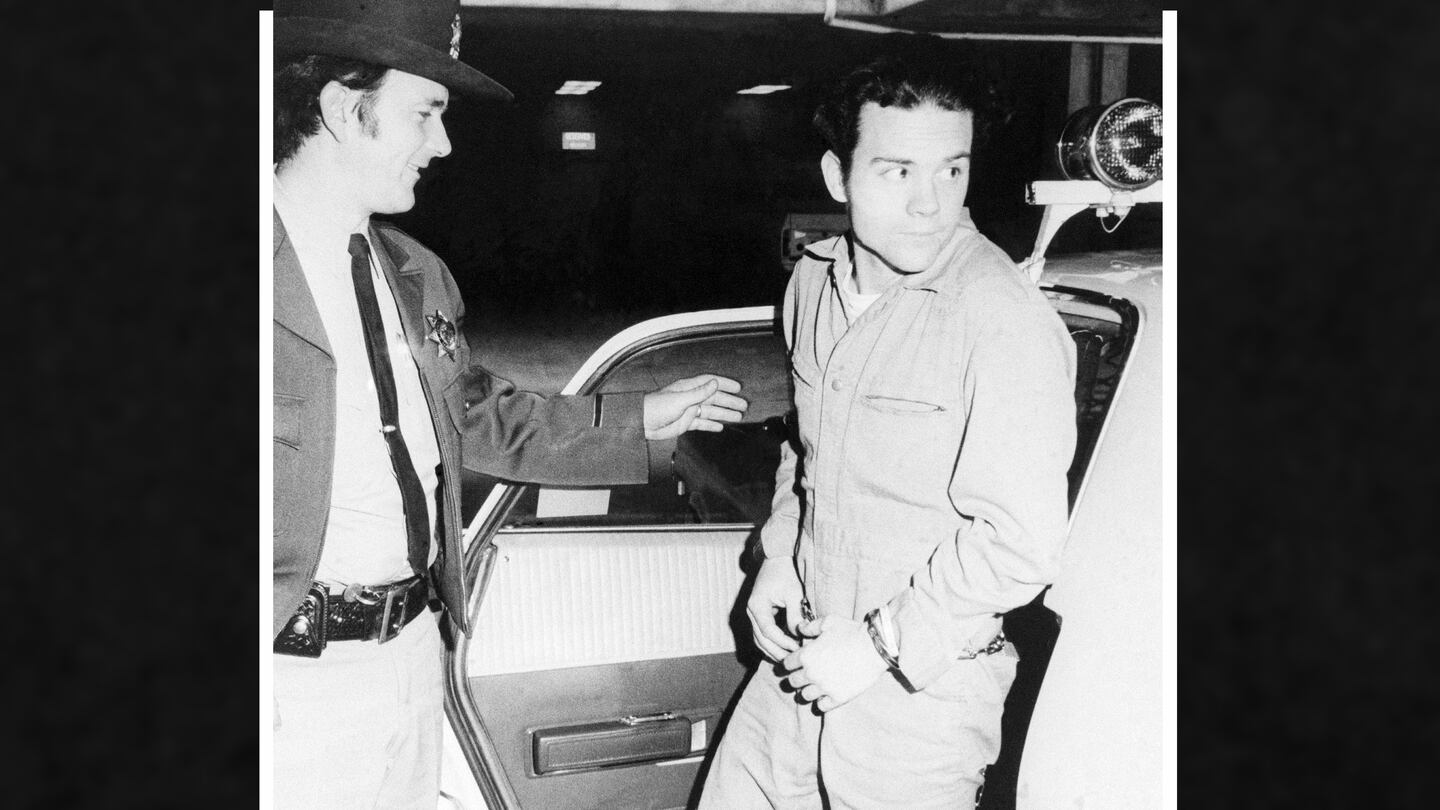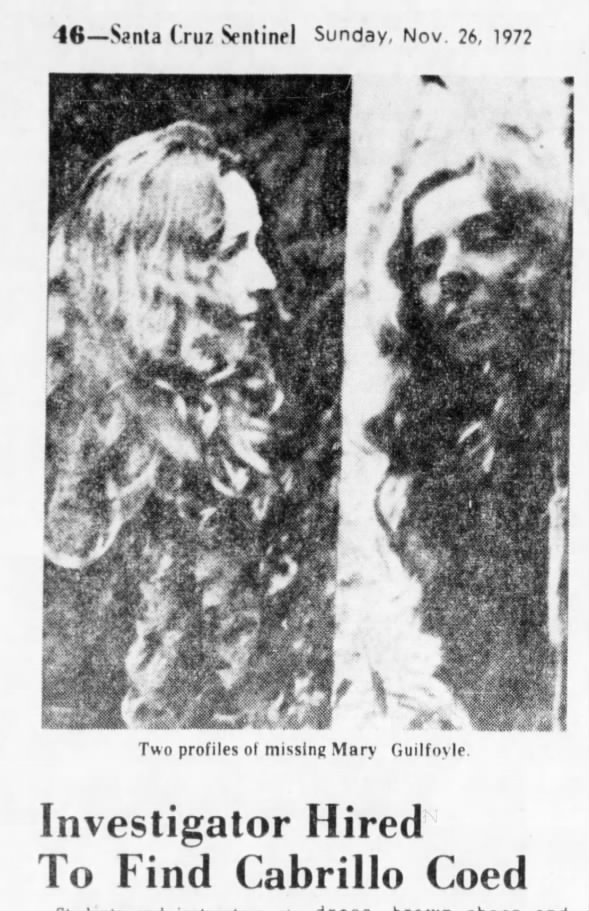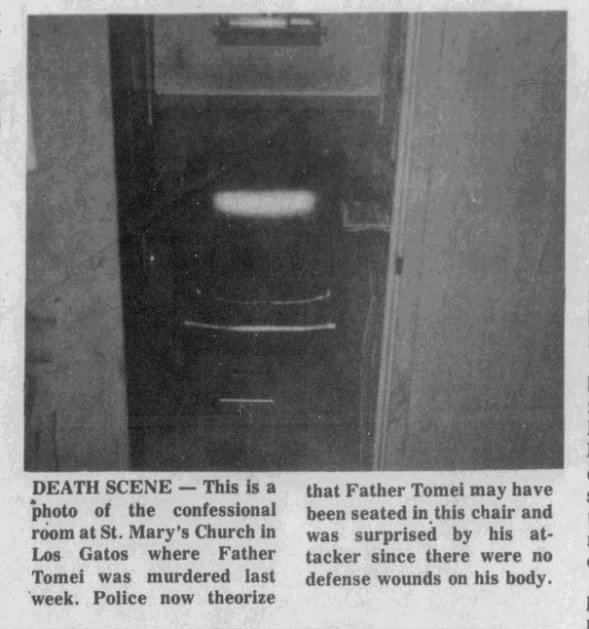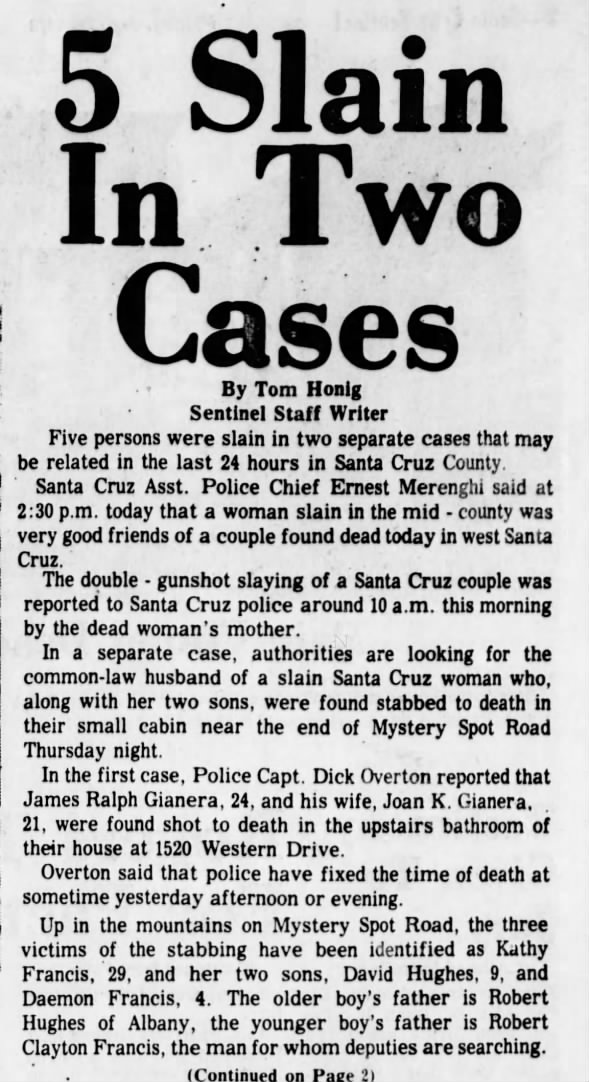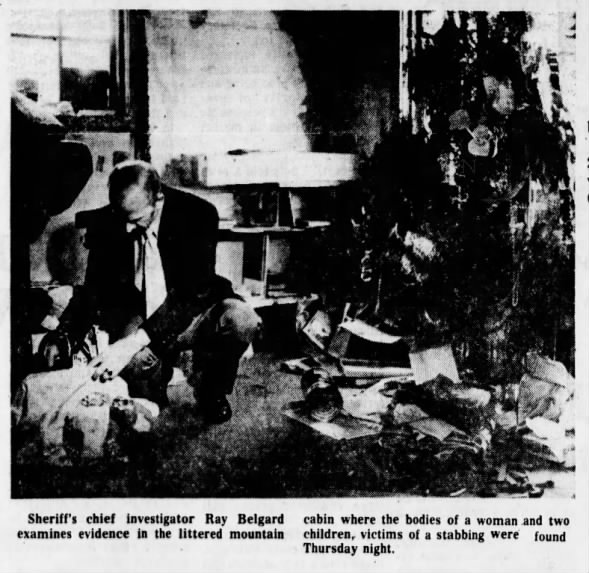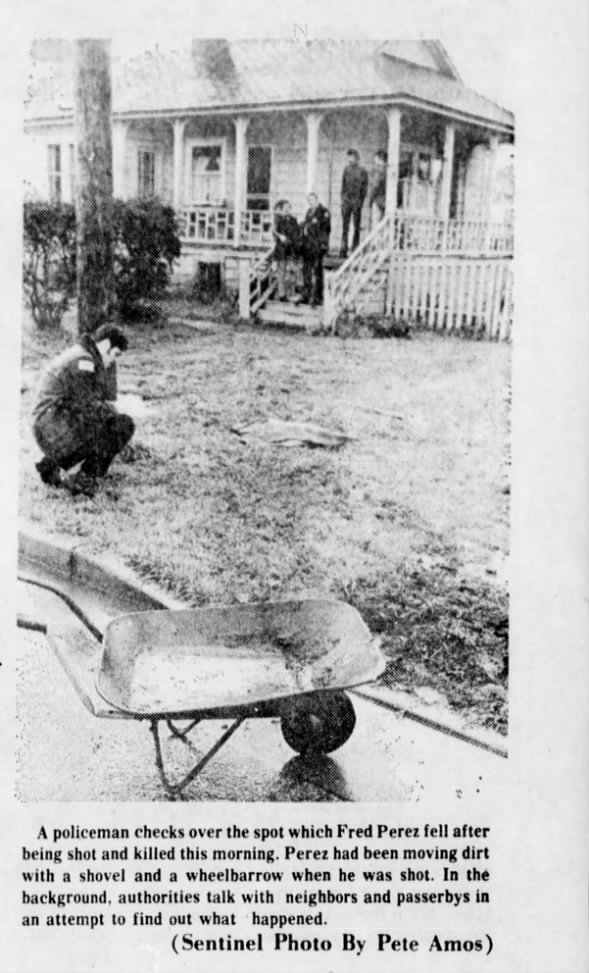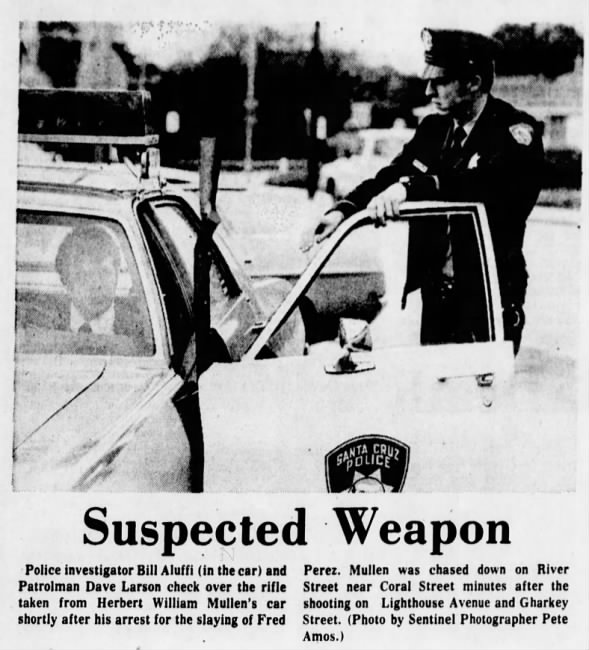SANTA CRUZ, Calif. — A California inmate who confessed to 13 murders — which he said he committed to prevent earthquakes — in the early 1970s has died in prison.
Herbert William Mullin, 75, died Thursday at the California Health Care Facility in Stockton. According to California prison officials, his death appeared to be from natural causes.
Herbert Mullin dies; infamous killer of Santa Cruz’s ‘Murder Capital’ days https://t.co/PGoNEzLF0G
— Santa Cruz Sentinel (@scsentinel) August 21, 2022
Mullin was serving life sentences for 11 of the 13 murders to which he confessed. The murders, which took place between October 1972 and February 1973 in Santa Cruz, took the lives of a priest, a coed, an acquaintance and his wife, a mother and her two children, an elderly former prizefighter, a homeless good Samaritan and four teenage boys.
Mullin had been denied parole a number of times since he first became eligible in the 1980s. In multiple parole hearings, Mullin placed blame for the murders on his now-deceased parents, who he accused in 2006 of “denying him maturity.” He said they had failed teach him the facts of life, including society’s “pecking order,” the Santa Cruz Sentinel reported.
He was last before the parole board in March 2021, according to Santa Cruz prosecutors.
When questioned at that final hearing, Mullen admitted that he had killed the 13 victims, but “insisted that his parents forced him to do it by their inappropriate upbringing and felt his parents and sister should be held responsible,” a news release stated.
“Mr. Mullin continues to blame others for his actions,” District Attorney Jeff Rosell said in a statement last year. “He lacks insight and shows no true remorse for these brutal murders. To this day, Mr. Mullin continues to pose as high of a risk to the community as he did during his crime spree in 1972 and 1973 if he were released.”
The Sentinel reported that Mullin, a one-time honor student whose mental illness was exacerbated by LSD use and the death of a close friend, had been hearing voices for weeks before he began killing. The 25-year-old later told authorities the voices were those of his parents, who he said convinced him to kill in order to save California from cataclysmic earthquakes.
Mullin’s birth date was April 18, the anniversary of the devastating 1906 San Francisco earthquake. According to reports, he found significance in the date.
The ‘murder capital’
Santa Cruz was a dangerous place in the 1970s. According to the Mercury News, murder sprees committed by a total of three serial killers over the decade helped the city earn the nickname of the “murder capital” of the U.S.
Two of those killers, Mullin and Edmund Emil Kemper III, were operating at the same time, completely independent of one another. Kemper, who had been jailed at 15 for the murders of his grandparents, was on parole in 1972 and 1973 when he killed six female college students, his mother and his mother’s best friend.
Kemper, whose favorite hangout was a bar frequented by police officers, called and confessed to one of his cop friends after the final murders. Later, when behind bars, he was housed in the cell next to Mullin.
Mullin’s murder spree began on Oct. 13, 1972, when he beat Lawrence White, a 55-year-old homeless man, to death with a baseball bat on the side of the road. Mullin had spotted White walking alone and pulled his station wagon over, popped the hood and pretended to have engine trouble.
When White stopped to help, Mullin killed him and hid his body in some nearby woods.
His next victim was Mary Margaret Guilfoyle, 24, a Cabrillo College student who vanished Oct. 24, 1972, after hitchhiking from campus to run an errand. She never returned.
Sentinel archives show that Guilfoyle’s family hired a private investigator to find her, to no avail. Her skeletal remains were found the following February near Bonny Doon, about 5 miles outside of Santa Cruz.
Reports at the time said Mullin had stabbed Guilfoyle and eviscerated her body.
On Nov. 2, 1972, the Rev. Henri Antonio Tomei, 64, was hearing confessions in a booth at St. Mary’s Catholic Church in Los Gatos when Mullin attacked the priest. He was scared off by a church secretary, but not before he had beaten and fatally stabbed Tomei in the heart.
Mullin’s fingerprints were later found in the confessional, the Sentinel reported.
The killer went quiet through the holidays but on Jan. 25, 1973, he attacked former classmate James Ralph Gianera, 24, and Gianera’s wife, Joan Gianera, 21, in their Santa Cruz home. Both were shot to death, and Joan Gianera had been stabbed.
The couple was survived by a 16-month-old daughter.
The same day as the Gianera murders, Kathy Francis, 29, was stabbed to death along with her two young sons, David Hughes, 9, and 4-year-old Daemon Francis, in their cabin near the Mystery Spot tourist attraction. All three had also been shot, according to media accounts.
Kathy Francis was friends with the Gianeras, and all three were involved in the marijuana trade. Francis and the couple lived on a ranch together in Marysville before moving to Santa Cruz more than a year before the murders, according to authorities.
Prosecutors later argued at Mullin’s trial that he killed Francis and her children because Francis knew he had been looking for Jim Gianera the day of the murders.
According to testimony, Mullin had gone to Francis’ cabin looking for Jim Gianera. He left and ultimately found the man, killing him and his wife in a bathroom of their home.
Mullin later told a defense psychiatrist that he killed Joan Gianera because “she was a witness and (he) didn’t want to be punished,” the Sentinel reported.
>> Read more true crime stories
He returned to Francis’ home after the double murder and killed the witnesses there, prosecutors said.
Sixteen days later, Mullin was on a hike in Henry Cowell State Park near Felton when he came upon Brian Scott Card, 19, David Oliker, 18, Robert Spector, 18, and Mark Dreibelbis, 15. Authorities said he pretended to be a park ranger and told the teensthey were illegally camping and to leave.
They refused. Mullin later returned and shot them all in the head.
Card’s brother found the slain teens Feb. 17 near a makeshift tent they were staying in.
By that time, Mullin’s luck had run out, and he was in custody in connection with his final killing. Fred Abbie Perez, a retired fisherman and former boxer, was gunned down Feb. 13, 1973, as he did yardwork outside his home.
Mullin was captured after one of Perez’s neighbors told police she saw a station wagon leaving the scene immediately after the fatal gunshot.
A Santa Cruz patrol officer spotted the wagon a few minutes later and pulled Mullin over before he could leave town. A rifle was seized from Mullin’s car, as was a .22-caliber handgun.
Mullin was later linked to several of the killings through ballistics.
Perez, 72, was part of one of the earliest families in Santa Cruz County, the Sentinel reported. His family in 1863 established one of the area’s oldest fishing industries.
Boxing under the name Freddie Bell, Perez fought his way to middleweight champion of Central California.
‘Stark raving mad’
Mullin was ultimately charged with 10 murders in Santa Cruz County, though he admitted to the three others during his trial. His defense team argued that he was not guilty by reason of insanity.
“He is stark raving mad,” defense attorney Jim Jackson said, according to the Sentinel.
The court learned that Mullin had been previously diagnosed with schizophrenia. His attorney claimed his paranoid delusions made him kill and he should not be held criminally responsible.
Some of the victims had been killed because voices told Mullin to kill them, Jackson said in court. In the murder of Tomei, Mullin said it was his father’s voice that told him to kill the priest.
Other victims, like Jim Gianera, were members of a “kill joy sadism” plot, led by Mullin’s parents, to ruin Mullin’s life, he claimed. Mullin said he believed others, including the four teenage campers, had wanted to die as sacrifices to save the planet.
>> Read more true crime stories
Prosecutors argued, however, that Mullin’s mental illness did not equal diminished capacity to understand his crimes. Covering his tracks and the premeditation of some of the crimes, like the murders of the Gianeras, showed that he was legally sane, they told the jury.
Jurors agreed and convicted Mullin of killing Perez, the Gianeras, Francis and her children and the four teens slain in Henry Cowell State Park. He later pleaded guilty in Santa Clara County to Tomei’s murder.
Mullins was never tried for the murders of White and Guilfoyle.
©2022 Cox Media Group

